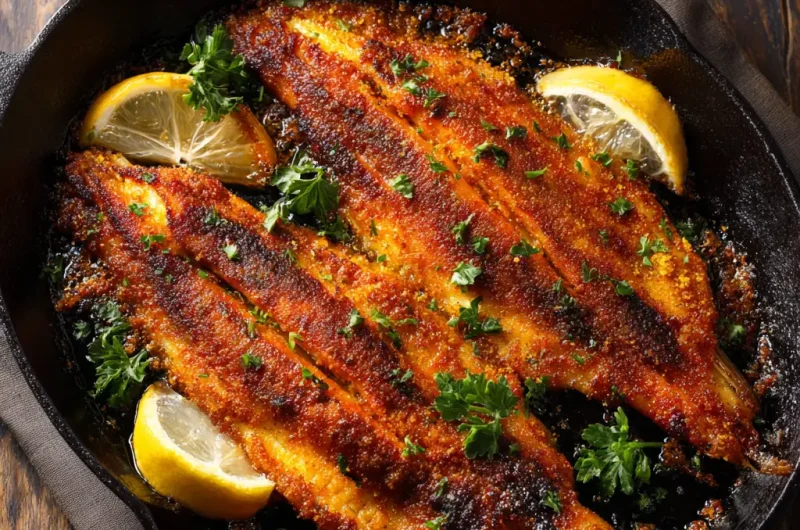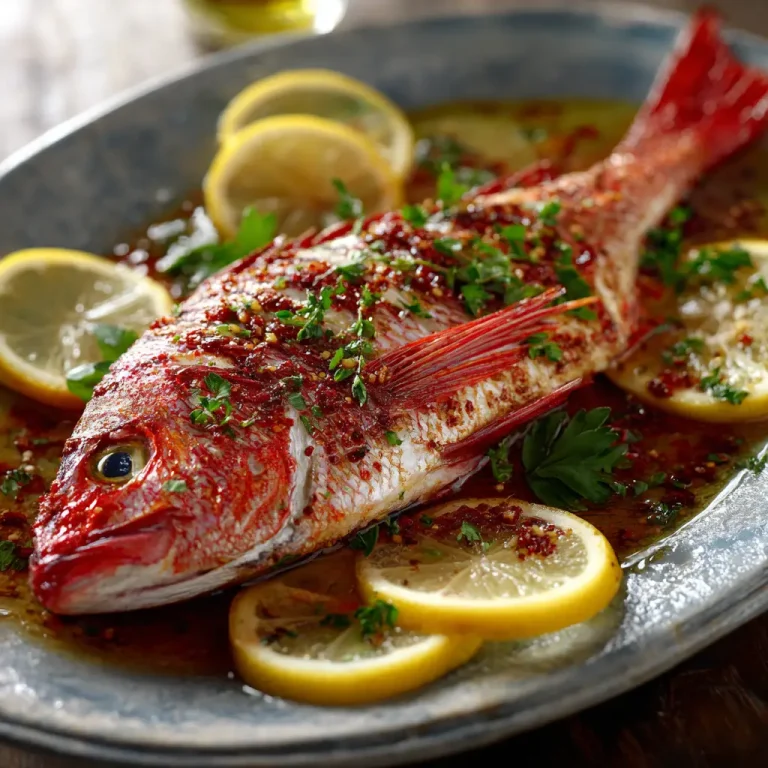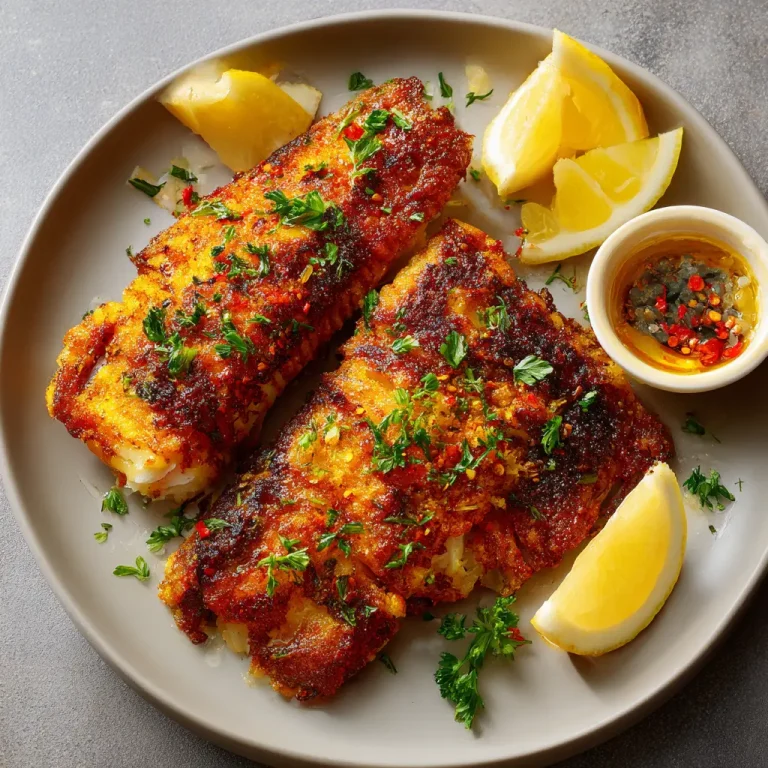Catfish Recipes: Easy and Delicious Ways to Cook Fresh Catfish
Introduction
Catfish has long been a favorite for seafood lovers across the world. Its mild flavor, firm texture, and versatility in the kitchen make it a perfect choice for home cooks and professional chefs alike. Unlike some fish that require heavy seasoning to mask a strong taste, catfish can shine with simple spices and fresh ingredients. From southern fried catfish to baked catfish with herbs, the possibilities are endless. Learning how to cook catfish properly allows its natural flavors to emerge while creating dishes that are both healthy and satisfying. Preparing catfish at home not only offers a fresh alternative to frozen options but also gives you full control over seasoning, cooking methods, and portion sizes. With a few essential techniques, anyone can create a mouthwatering catfish meal that impresses family and friends.
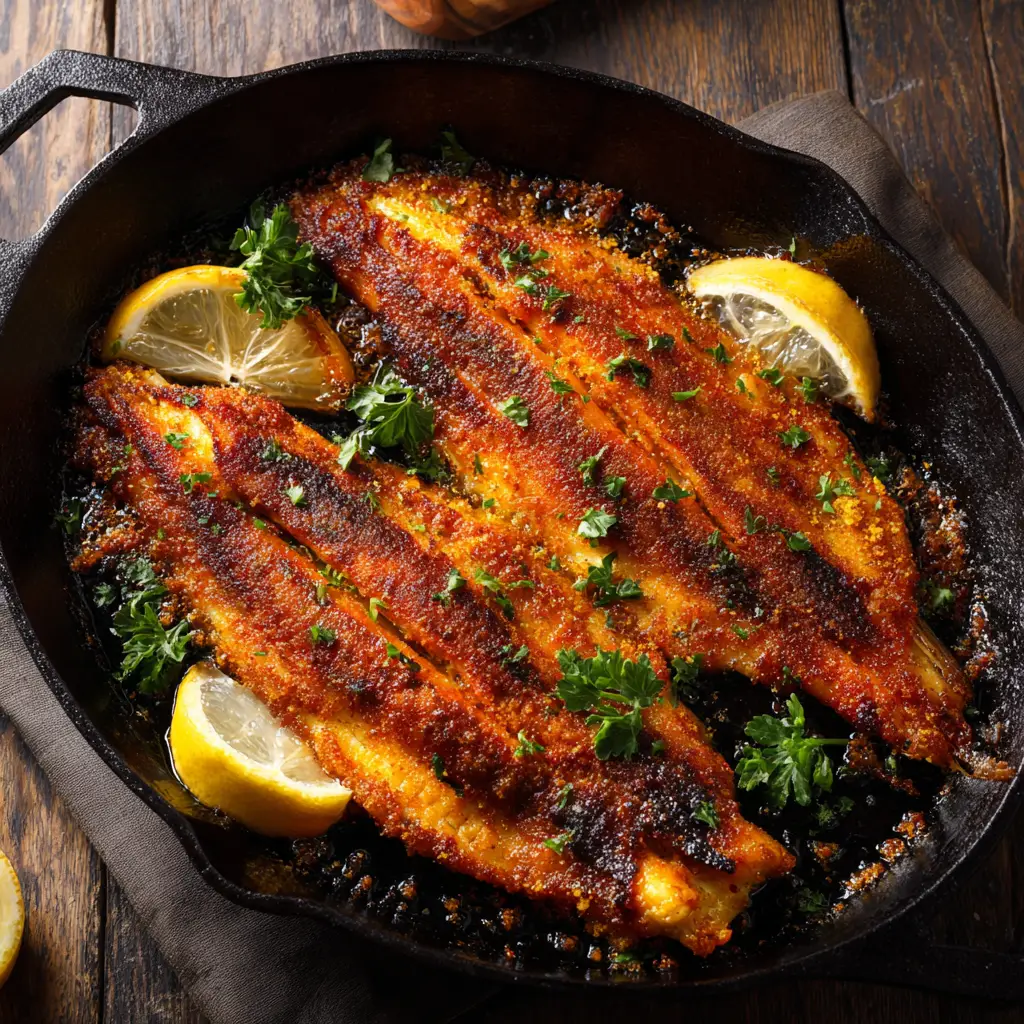
Cooking catfish is also a journey into comfort food. Many recipes draw inspiration from southern traditions, blending crispy coatings, rich sauces, and aromatic spices. At the same time, modern interpretations allow lighter preparations that retain the taste while reducing fat and calories. The variety in cooking methods makes catfish recipes accessible to all skill levels. Whether grilling outdoors on a summer evening, baking in the oven for a quick weeknight dinner, or frying for a classic southern-style treat, catfish adapts beautifully to any culinary environment. With careful preparation and attention to flavor, catfish dishes can transform an ordinary meal into a memorable dining experience.
Ingredients Needed
Creating a delicious catfish meal starts with fresh ingredients. The table below lists commonly used ingredients for a classic catfish recipe along with their approximate calorie counts. These measurements are for reference and can vary depending on brands or portion sizes.
| Ingredient | Amount | Calories |
|---|---|---|
| Catfish fillets | 4 pieces (6 oz each) | 480 |
| Cornmeal | 1 cup | 440 |
| All-purpose flour | 1/2 cup | 228 |
| Salt | 1 tsp | 0 |
| Black pepper | 1/2 tsp | 3 |
| Paprika | 1 tsp | 6 |
| Garlic powder | 1/2 tsp | 2 |
| Onion powder | 1/2 tsp | 4 |
| Cayenne pepper | 1/4 tsp | 2 |
| Eggs | 2 large | 140 |
| Milk | 1/2 cup | 60 |
| Vegetable oil | 1/4 cup | 480 |
These ingredients are essential for creating a balanced catfish dish that combines a crisp coating with tender, flavorful fish. Adjustments can be made based on dietary preferences or desired spice levels.
Step-by-Step Cooking Instructions
Cooking catfish is straightforward if you follow each step carefully. Start by preparing the fillets for seasoning. Pat the catfish dry with paper towels to ensure the coating sticks properly.
- Prepare the coating: In a shallow bowl, combine cornmeal, flour, salt, black pepper, paprika, garlic powder, onion powder, and cayenne pepper. Mix thoroughly to distribute the spices evenly.Continue your cooking journey with Fish Curry_ right after this.
- Prepare the wet mixture: In a separate bowl, whisk together the eggs and milk. This will help the coating adhere to the fish.
- Dredge the fillets: Dip each fillet first into the egg mixture, ensuring it is fully coated, then transfer it to the cornmeal and flour mixture. Press lightly to create a thick, even coating on all sides.
- Heat the oil: Pour vegetable oil into a large skillet to a depth of about 1/4 inch. Heat over medium-high until shimmering but not smoking. Test with a small piece of coating; it should sizzle immediately.
- Cook the catfish: Place fillets gently in the hot oil. Fry for 3 to 5 minutes per side, depending on thickness, until golden brown and crispy. Avoid overcrowding the pan, which can lower the oil temperature and create soggy coating.
- Drain and rest: Transfer cooked fillets to a plate lined with paper towels. Let rest for 2 to 3 minutes to remove excess oil and allow the crust to firm up.
- Serve immediately: Catfish is best enjoyed fresh out of the pan while the exterior is crispy and the inside remains juicy.
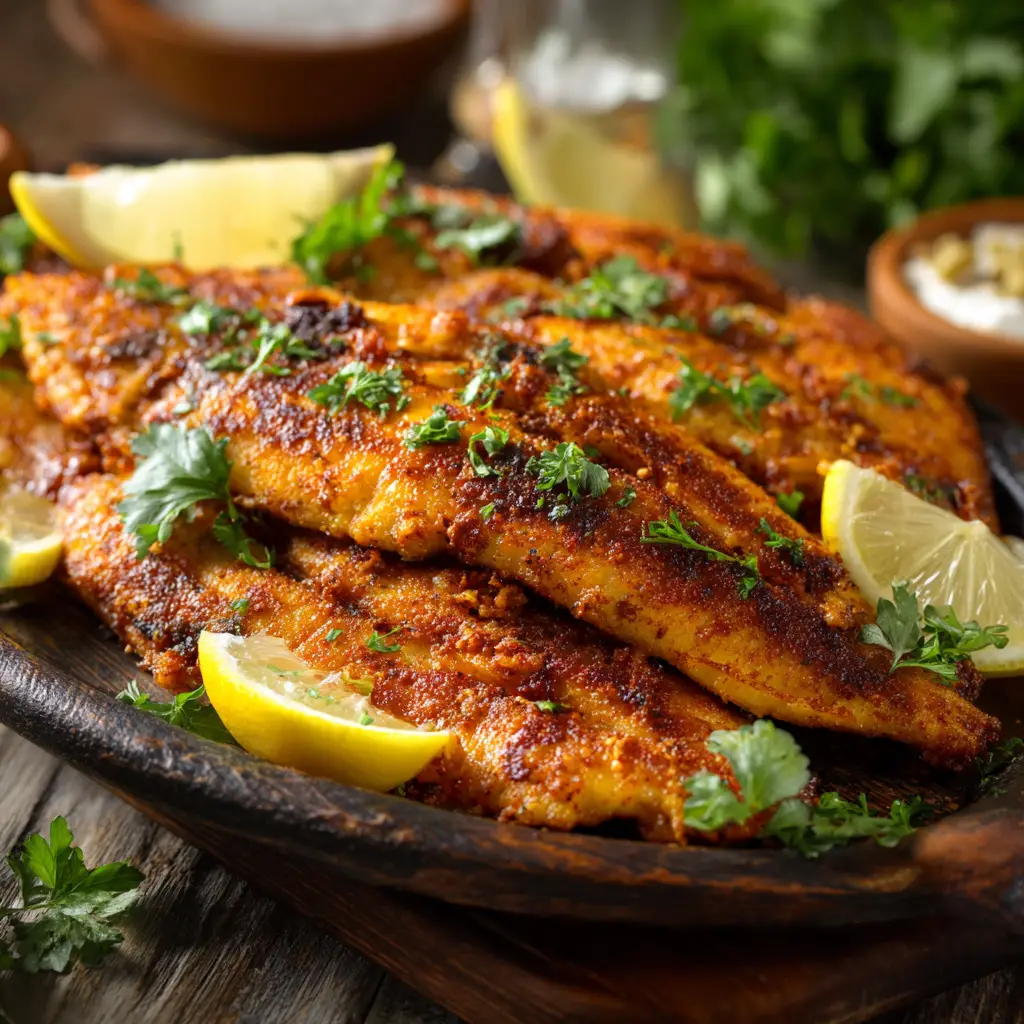
Tips for Customizing the Recipe
Catfish is incredibly versatile, making it easy to adapt recipes to your taste. For a spicier version, increase cayenne pepper or add a pinch of smoked paprika. Herbs like thyme, parsley, or dill can be mixed into the coating for added flavor. For a lighter alternative, bake catfish instead of frying by preheating the oven to 400 degrees Fahrenheit, coating the fillets, and placing them on a greased baking sheet for 15 to 20 minutes.
Experimenting with different coatings also enhances variety. Crushed crackers, panko breadcrumbs, or seasoned cornflakes provide unique textures. Lemon zest or grated parmesan cheese can be added to the coating for a tangy or cheesy twist. Marinades using buttermilk or a mixture of lemon juice and garlic can tenderize the fish while adding depth to the flavor.
Pairing sauces with catfish elevates the dish further. Traditional tartar sauce, spicy remoulade, or a fresh tomato salsa complement the mild taste without overpowering it. For a southern-style flair, drizzle hot sauce or mix it into the coating for a subtle kick. Customizing your catfish recipe allows every meal to feel new and exciting while staying simple and approachable for cooks of all skill levels.
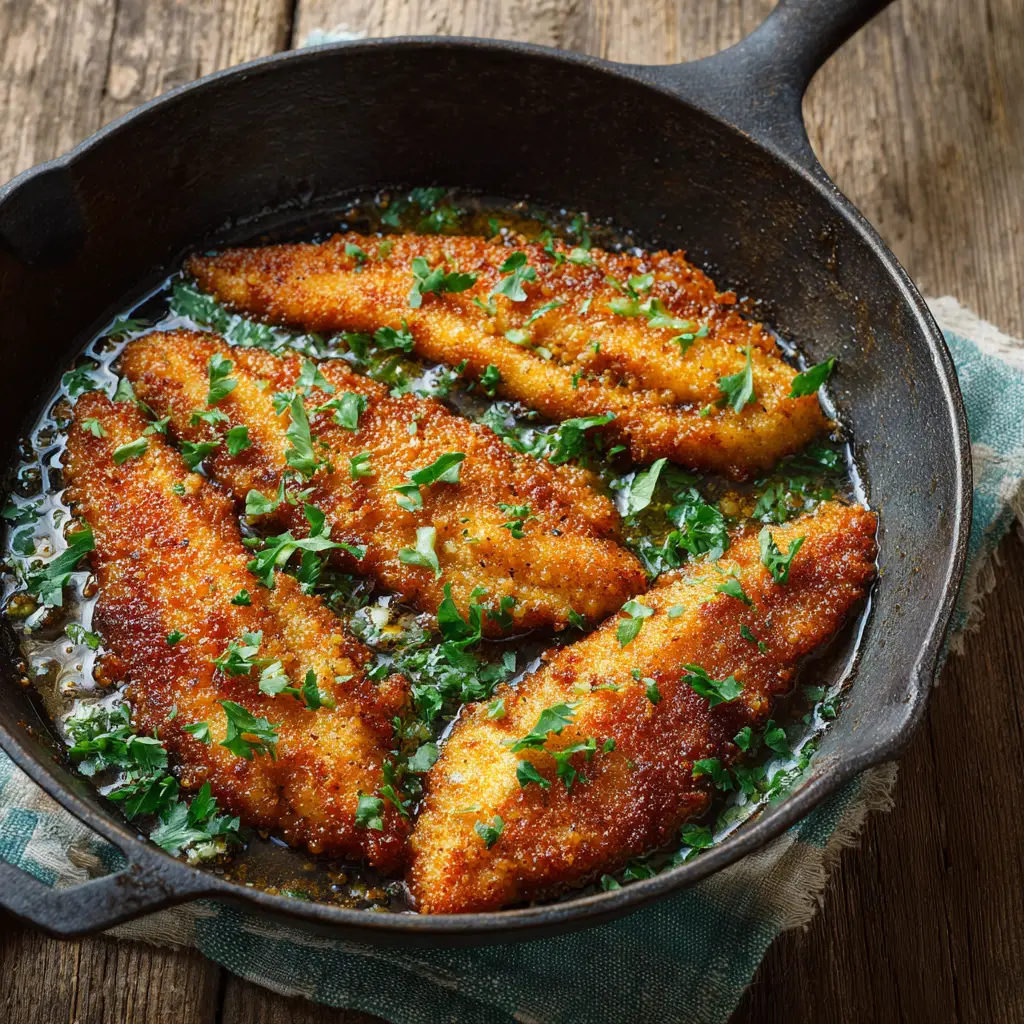
Nutritional Information
Catfish is a nutrient-rich option that provides protein, omega-3 fatty acids, and essential vitamins and minerals. A single 6-ounce fillet contains approximately 120 calories, 3 grams of fat, and 20 grams of protein. When prepared using moderate oil, the calorie count increases but remains lower than many fried foods.
The coating ingredients contribute additional calories but offer carbohydrates that complement the protein in the fish. Using whole grain alternatives, lighter coatings, or baking instead of frying can reduce total calories while maintaining flavor. Catfish is also low in mercury compared to other fish, making it a safe and healthy choice for regular consumption. Vitamins such as B12 and minerals like phosphorus and selenium support heart health, brain function, and overall well-being.
Serving Suggestions
Catfish pairs beautifully with a wide variety of sides and beverages. Classic southern pairings include coleslaw, cornbread, and baked beans. Fresh vegetable medleys, roasted potatoes, or steamed rice provide lighter accompaniments that balance the meal. Lemon wedges and fresh herbs enhance flavor and presentation.
For a complete dining experience, serve catfish with a crisp salad or sautéed greens. Creamy sauces, spicy dips, or tangy vinaigrettes can be offered on the side to suit different preferences. Catfish also works well in sandwiches, tacos, or wraps when paired with fresh vegetables and flavorful sauces. Presentation plays a role in elevating the dining experience, so arranging fillets neatly on a plate with garnishes can make the meal more visually appealing and enjoyable.
Catfish Recipes: Easy and Delicious Ways to Cook Fresh Catfish
Course: Blog4
servings15
minutes10
minutes410
kcalIngredients
4 catfish fillets (6 oz each)
1 cup cornmeal
1/2 cup all-purpose flour
1 tsp salt
1/2 tsp black pepper
1 tsp paprika
1/2 tsp garlic powder
1/2 tsp onion powder
1/4 tsp cayenne pepper
Directions
- Pat catfish fillets dry with paper towels.
- In a shallow bowl, mix cornmeal, flour, salt, black pepper, paprika, garlic powder, onion powder, and cayenne pepper.
- In another bowl, whisk together eggs and milk.
- Dip each fillet into the egg mixture, then coat with the cornmeal mixture, pressing gently.
- Heat vegetable oil in a skillet over medium-high heat until shimmering.
Recipe Video
Notes
- For a healthier option, bake fillets at 400°F for 15–20 minutes instead of frying.
Add herbs like parsley or dill to the coating for extra flavor.
Test oil temperature with a small piece of coating; it should sizzle immediately to ensure crispiness.
Frequently Asked Questions
What is the best way to clean catfish before cooking?
Rinse fillets under cold water and pat dry. Remove any remaining skin or bones if necessary.
Can I freeze catfish for later use?
Yes. Wrap fillets tightly in plastic wrap or vacuum seal, then store in the freezer for up to three months.
How do I prevent catfish from sticking to the pan when frying?
Ensure the oil is fully heated and use a nonstick or well-seasoned skillet. Avoid moving the fillets too soon.
Is catfish suitable for baking instead of frying?
Absolutely. Baking at 400 degrees Fahrenheit for 15 to 20 minutes creates a crispy exterior with less oil.
What spices work best with catfish?
Paprika, garlic powder, onion powder, cayenne pepper, and black pepper enhance the flavor naturally. Herbs like parsley, thyme, and dill add freshness.
Conclusion
Cooking catfish at home offers endless opportunities to create flavorful, satisfying meals that appeal to all tastes. Its natural texture and mild flavor make it adaptable to a wide range of seasonings, cooking methods, and serving styles. Taking time to properly coat, cook, and season catfish ensures a dish that is both visually appealing and delicious. Incorporating fresh ingredients, experimenting with coatings, and pairing with complementary sides transforms a simple fillet into a culinary delight.

